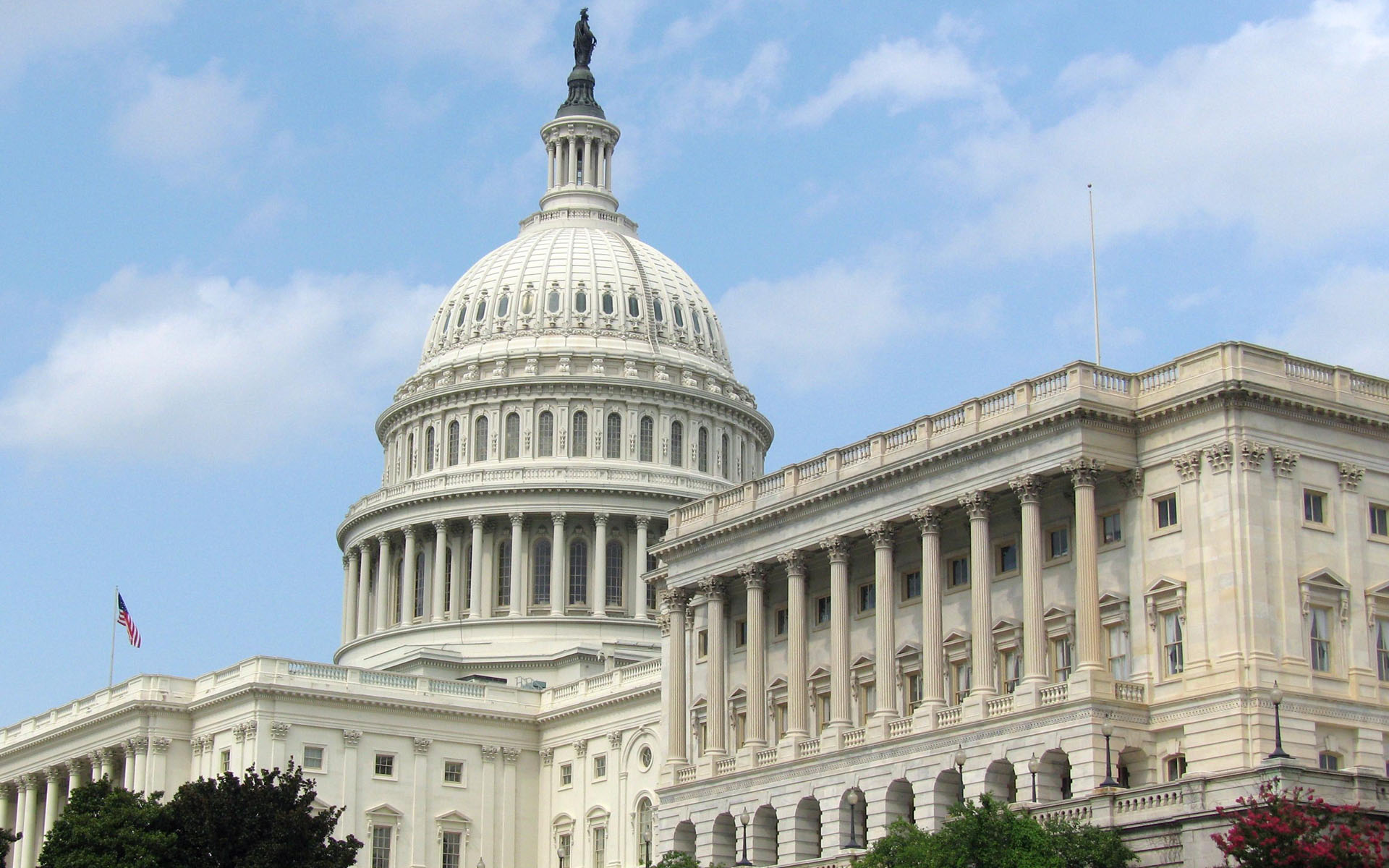
by admin | Nov 3, 2017 | Group Benefit Plans, HIPAA, Human Resources
 Employers who are designing a health and welfare benefit plan for their employees often wonder about the rules relating to setting premiums for employees. Employers generally have significant flexibility in this part of their plan’s design. Common structures contemplated by employers include, but are not limited to:
Employers who are designing a health and welfare benefit plan for their employees often wonder about the rules relating to setting premiums for employees. Employers generally have significant flexibility in this part of their plan’s design. Common structures contemplated by employers include, but are not limited to:
- Charging all employees a flat amount for their health plan
- Charging employees a percentage of the premium for the health plan, with the percentage changing as employees move between tiers (self, self plus one, self plus family)
- Giving employees a set dollar amount that they can use to offset the cost of whatever plan and plan tier they enroll in
Employers are also interested in setting different contribution structures for different groups of employees. Sometimes this is due to a geographic difference between employees, job types, staff versus management, and more. Employers may wish to give lower-paid employees more employer-provided money; sometimes employers wish to give managers or executive staff more employer-provided money.
Employers should be aware that there are different nondiscrimination requirements to consider.
Generally, under HIPAA non-discrimination rules, employers have discretion when structuring their benefits plans and may make distinctions among employee populations regarding access to and the level of benefits offered. Plans may differ among employees only on “bona fide employment-based classifications” consistent with the employer’s usual business practice. Examples that would satisfy this requirement include salaried, hourly, full-time, part-time, type of job, geographic location, date of hire, division, subsidiary, business unit, and profit center distinctions.
If an employer’s proposed structure meets these basic HIPAA requirements, then the employer needs to review the applicable nondiscrimination requirements under Internal Revenue Code Section 125 (for cafeteria plans) and Section 105(h) (for self-funded plans). If the employer’s plan is subject to these rules, at a most basic level, the plan cannot favor highly compensated individuals. Sometimes an innocent plan design can lead to an employer failing the nondiscrimination requirements under Section 125 or 105(h) without the employer intentionally favoring the highly compensated employees. Many employers also erroneously assume that none of their employees fall into the “highly compensated” category, so the rules do not apply to them. As a best practice, any time an employer has a plan design with different levels of employer contributions, the employer should run the applicable testing to ensure its plan is compliant.
Under Section 125, benefit plans cannot discriminate in favor of highly compensated individuals or key employees.
By Danielle Capilla
Originally Published By United Benefit Advisors

by admin | Nov 1, 2017 | ACA, Compliance
 Two tri-agency (Internal Revenue Service, Employee Benefits Security Administration, and Centers for Medicare and Medicaid Services) Interim Final Rules were released and became effective on October 6, 2017, and will be published on October 31, 2017, allowing a greater number of employers to opt out of providing contraception to employees at no cost through their employer-sponsored health plan. The expanded exemption encompasses all non-governmental plan sponsors that object based on sincerely held religious beliefs, and institutions of higher education in their arrangement of student health plans. The exemption also now encompasses employers who object to providing contraception coverage on the basis of sincerely held moral objections and institutions of higher education in their arrangement of student health plans. Furthermore, if an issuer of health coverage (an insurance company) had sincere religious beliefs or moral objections, it would be exempt from having to sell coverage that provides contraception. The exemptions apply to both non-profit and for-profit entities.
Two tri-agency (Internal Revenue Service, Employee Benefits Security Administration, and Centers for Medicare and Medicaid Services) Interim Final Rules were released and became effective on October 6, 2017, and will be published on October 31, 2017, allowing a greater number of employers to opt out of providing contraception to employees at no cost through their employer-sponsored health plan. The expanded exemption encompasses all non-governmental plan sponsors that object based on sincerely held religious beliefs, and institutions of higher education in their arrangement of student health plans. The exemption also now encompasses employers who object to providing contraception coverage on the basis of sincerely held moral objections and institutions of higher education in their arrangement of student health plans. Furthermore, if an issuer of health coverage (an insurance company) had sincere religious beliefs or moral objections, it would be exempt from having to sell coverage that provides contraception. The exemptions apply to both non-profit and for-profit entities.
The currently-in-place accommodation is also maintained as an optional process for exempt employers, and will provide contraceptive availability for persons covered by the plans of entities that use it (a legitimate program purpose). These rules leave in place the government’s discretion to continue to require contraceptive and sterilization coverage where no such objection exists. These interim final rules also maintain the existence of an accommodation process, but consistent with expansion of the exemption, the process is optional for eligible organizations. Effectively this removes a prior requirement that an employer be a “closely held for-profit” employer to utilize the exemption.
Employers that object to providing contraception on the basis of sincerely held religious beliefs or moral objections, who were previously required to offer contraceptive coverage at no cost, and that wish to remove the benefit from their medical plan are still subject (as applicable) to ERISA, its plan document and SPD requirements, notice requirements, and disclosure requirements relating to a reduction in covered services or benefits. These employers would be obligated to update their plan documents, SBCs, and other reference materials accordingly, and provide notice as required.
Employers are also now permitted to offer group or individual health coverage, separate from the current group health plans, that omits contraception coverage for employees who object to coverage or payment for contraceptive services, if that employee has sincerely held religious beliefs relating to contraception. All other requirements regarding coverage offered to employees would remain in place. Practically speaking, employers should be cautious in issuing individual policies until further guidance is issued, due to other regulations and prohibitions that exist.
By Danielle Capilla
Originally Published By United Benefit Advisors

by admin | Oct 26, 2017 | Benefit Management, Benefit Plan Tips, Tricks and Traps, Human Resources

Fall. With it comes cooler temperatures’, falling leaves, warm seasonal scents like turkey and pumpkin pie, and Open Enrollment. It goes without saying; employees who understand the effectiveness of their benefits are much more pleased with those packages, happier with their employers, and more engaged in their work. So, as your company gears up for a new year of navigating Open Enrollment, here are a few points to keep in mind to make the process smoother for both employees and your benefits department. Bonus: it will lighten the load for both parties alike during an already stress-induced season.
Communicate Open Enrollment Using a Variety of Mediums
Advertise 2018 benefit changes to employees by using a variety of mediums. The more reminders and explanation of benefits staff members have using more than one mode of media, the more likely employees will go into Open Enrollment with more knowledge of your company’s benefit options and when they need to have these options completed for the new year.
- Consider explainer videos to simplify the amount of emails and paperwork individuals need to review come Open Enrollment time. These videos can increase the bottom line as well, eliminating the high cost of print material.
- Opt for placards placed throughout your high-traffic areas. Communicate benefit options and remind employees of Open Enrollment dates for the new year by posting in such areas as the lobby, break room and bathroom stalls.
- Choose SMS texting. Today, over 97% of individuals use text. Ninety-eight percent of those that use text open messages within the first three minutes of receiving them; 6-8 times higher than the engagement rate for email. Delivering a concise message to employees’ mobile devices creates more touch points along the Open Enrollment journey. The key, however, is making it quick so as to entice your employees to take action.
- Promote apps and in-app tools. Push notifications and apps like Remind 101 can help drive employee engagement during Open Enrollment season simply by providing short messages reminding them to enroll. Notifications like these can also be tailored to unique employee groups based on location, job level, eligibility status and more.
Utilize Mobile Apps and Web Portals for Open Enrollment
Now that your company has communication down pat for Open Enrollment, simplify the arduous task employees have of enrolling for the coming year by going paperless. Utilize web portals through benefit brokers and companies like ADP to eliminate the hassle of employees having to fill out paperwork both at renewal, and at the time of hire. With nearly three quarters of individuals in the United States checking their phone once an hour and 90% percent of this time is spent using one app or another as a main source of communication, mobile apps can make benefits engagement much easier due to the anywhere/anytime accessibility they offer.
The personal perks for employees are great too! Staff members with a major lifestyle event can make benefit adjustments quickly with the ease of mobile apps. Employees recognize this valuable and time-saving trend and enjoy having this information at their fingertips.
Open Enrollment season can be a stressful time but hopefully these tips will help for a smoother transition into the next year for your business. Simple things like using explainer videos, placing reminders in high traffic areas and utilizing mobile apps and text messaging can save time and stress in the long run for your employees and benefit department.

by admin | Oct 20, 2017 | ACA
 On the evening of October 12, 2017, President Trump announced that cost sharing reductions for low income Americans in relation to the Patient Protection and Affordable Care Act (ACA) would be stopped. The Department of Health and Human Services (HHS) has confirmed that payments will be stopped immediately. While there is no direct impact to employers at this time, UBA will continue to educate employers about changes in the law and its Health Plan Survey will continue to track group health plan rates over time as insurance companies potentially seek to recoup lost revenue. It is anticipated at least some state attorneys general will file lawsuits to block the ending of the subsidy payments, with California Attorney General Xavier Becerra stating he is prepared to file a lawsuit to protect the subsidies.
On the evening of October 12, 2017, President Trump announced that cost sharing reductions for low income Americans in relation to the Patient Protection and Affordable Care Act (ACA) would be stopped. The Department of Health and Human Services (HHS) has confirmed that payments will be stopped immediately. While there is no direct impact to employers at this time, UBA will continue to educate employers about changes in the law and its Health Plan Survey will continue to track group health plan rates over time as insurance companies potentially seek to recoup lost revenue. It is anticipated at least some state attorneys general will file lawsuits to block the ending of the subsidy payments, with California Attorney General Xavier Becerra stating he is prepared to file a lawsuit to protect the subsidies.
Background
Individuals with household modified adjusted gross incomes (AGI) in excess of 100 percent but not exceeding 400 percent of the federal poverty level (FPL) may be eligible for cost-sharing reductions for coverage purchased through health insurance exchanges if they meet a variety of criteria. Cost-sharing reductions are limited to coverage months for which the individual is allowed a premium tax credit. Eligibility for cost-sharing reductions is based on the tax year for which advanced eligibility determinations are made by HHS, rather than the tax year for which premium credits are allowed. In 2015, cost-sharing subsides reduced out-of-pocket (OOP) limits:
- Less than 100 percent but not exceeding 200 percent of FPL: OOP limits reduced by two-thirds
- Greater than 200 percent but not exceeding 300 percent of FPL: OOP limits reduced by one-half
- Greater than 300 percent but not exceeding 400 percent of FPL: OOP limits reduced by one-third
After 2015, the base percentages were shifted based on a percentage of average per capita health insurance premium increases. The cost-sharing reduction is paid directly to the insurer, and is automatically applied when eligible individuals enroll in a silver plan on the Marketplace or Exchange.
The cost-sharing reduction is not the same as the “advance premium tax credit” which is also available to individuals with household modified AGIs of at least 100 percent and not exceeding 400 percent of the FPL.
By Danielle Capilla
Originally posted by www.UBABenefits.com

by admin | Oct 11, 2017 | ACA, ERISA, Group Benefit Plans

Two tri-agency (Internal Revenue Service, Employee Benefits Security Administration, and Centers for Medicare and Medicaid Services) Interim Final Rules were released and became effective on October 6, 2017, and will be published on October 31, 2017, allowing a greater number of employers to opt out of providing contraception to employees at no cost through their employer-sponsored health plan. The expanded exemption encompasses all non-governmental plan sponsors that object based on sincerely held religious beliefs, and institutions of higher education in their arrangement of student health plans. The exemption also now encompasses employers who object to providing contraception coverage on the basis of sincerely held moral objections and institutions of higher education in their arrangement of student health plans. Furthermore, if an issuer of health coverage (an insurance company) had sincere religious beliefs or moral objections, it would be exempt from having to sell coverage that provides contraception. The exemptions apply to both non-profit and for-profit entities.
The currently-in-place accommodation is also maintained as an optional process for exempt employers, and will provide contraceptive availability for persons covered by the plans of entities that use it (a legitimate program purpose). These rules leave in place the government’s discretion to continue to require contraceptive and sterilization coverage where no such objection exists. These interim final rules also maintain the existence of an accommodation process, but consistent with expansion of the exemption, the process is optional for eligible organizations. Effectively this removes a prior requirement that an employer be a “closely held for-profit” employer to utilize the exemption.
Employers that object to providing contraception on the basis of sincerely held religious beliefs or moral objections, who were previously required to offer contraceptive coverage at no cost, and that wish to remove the benefit from their medical plan are still subject (as applicable) to ERISA, its plan document and SPD requirements, notice requirements, and disclosure requirements relating to a reduction in covered services or benefits. These employers would be obligated to update their plan documents, SBCs, and other reference materials accordingly, and provide notice as required.
Employers are also now permitted to offer group or individual health coverage, separate from the current group health plans, that omits contraception coverage for employees who object to coverage or payment for contraceptive services, if that employee has sincerely held religious beliefs relating to contraception. All other requirements regarding coverage offered to employees would remain in place. Practically speaking, employers should be cautious in issuing individual policies until further guidance is issued, due to other regulations and prohibitions that exist.
Background
As background, the Patient Protection and Affordable Care Act (ACA) requires that non-grandfathered group health plans and health insurance issuers offering non-grandfathered group or individual health insurance coverage provide coverage of certain specified preventive services without cost sharing.
In 2011, the Departments issued regulations requiring coverage of women’s preventive services provided for in the Health Resources & Services Administration (HRSA) guidelines. The HRSA guidelines include all FDA-approved contraceptives, sterilization procedures, and patient education and counseling for women with reproductive capacity, as prescribed by the health care provider (collectively, contraceptive services).
Under the 2011 regulations, group health plans of “religious employers” (specifically defined in the law) are exempt from the requirement to provide contraceptive coverage.
In 2013, the Departments published regulations that provide an accommodation for eligible organizations that object on religious grounds to providing coverage for contraceptive services, but are not eligible for the exemption for religious employers. Under the accommodation, an eligible organization is not required to contract, arrange, pay for, or provide a referral for contraceptive coverage. The accommodation generally ensures that women enrolled in the health plan established by the eligible organization, like women enrolled in health plans maintained by other employers, receive contraceptive coverage seamlessly–that is, through the same issuers or third party administrators that provide or administer the health coverage furnished by the eligible organization, and without financial, logistical, or administrative obstacles.
In 2014, the U.S. Supreme Court decided Burwell v. Hobby Lobby. The Court held that the contraceptive coverage requirement substantially burdened the religious exercise of closely held for-profit corporations that had religious objections to providing contraceptive coverage and that the accommodation was a less restrictive means of provision coverage to their employees.
Because of Burwell v. Hobby Lobby, the Departments extended the accommodation to closely held for-profit entities. Under the accommodation, an eligible organization that objects to providing contraceptive coverage for religious reasons may either:
- Self-certify its objection to its health insurance issuer (to the extent it has an insured plan) or third party administrator (to the extent it has a self-funded plan) using a form provided by the Department of Labor (EBSA Form 700); or
- Self-certify its objection and provide certain information to the Department of Health and Human Services (HHS) without using any particular form.
In 2016, in Zubik v. Burwell, the U.S. Supreme Court considered claims by several employers that, even with the accommodation provided in the regulations, the contraceptive coverage requirement violates the Religious Freedom Restoration Act of 1993 (RFRA). The Court heard oral arguments and ultimately remanded the case (and parallel RFRA cases) to the lower courts to give the parties “an opportunity to arrive at an approach going forward that accommodates [the objecting employers’] religious exercise while at the same time ensuring that women covered by [the employers’] health plans ‘receive full and equal health coverage, including contraceptive coverage.'”
Previously, Who Could Object and How
As provided in the 2015 final regulations, only certain organizations could object to providing contraception coverage. The final regulations provide two accommodations for eligible organizations to provide notice of a religious objection to the coverage of contraceptive services. Employers that object to providing contraceptive services will need to determine if they meet the criteria of an eligible organization in order to use one of the two accommodations. An eligible organization is an organization that meets all of the following requirements.
- Opposes providing coverage for some or all of any contraceptive items or services required to be covered on account of religious objections.
- Either is organized and operates as a nonprofit entity and holds itself out as a religious organization, or is organized and operates as a closely held for-profit entity, and the organization’s highest governing body (such as its board of directors, board of trustees, or owners, if managed directly by its owners) has adopted a resolution or similar action, under the organization’s applicable rules of governance and consistent with state law, establishing that it objects to covering some or all of the contraceptive services on account of the owner’s sincerely held religious beliefs.
- If both of the first two requirements are met, the organization must self-certify. The organization must make such self-certification or notice available for examination upon request by the first day of the first plan year to which the accommodation applies. The self-certification or notice must be executed by a person authorized to make the certification or notice on behalf of the organization, and must be maintained in a manner consistent with the record retention requirements under Section 107 of ERISA.
A “closely held for-profit entity” is defined in the regulations as an organization that:
- Is not a nonprofit entity;
- Has no publicly traded ownership interests (for this purpose, a publicly traded ownership interest is any class of common equity securities required to be registered under section 12 of the Securities Exchange Act of 1934); and
- Has more than 50 percent of the value of its ownership interest owned directly or indirectly by five or fewer individuals, or has an ownership structure that is substantially similar thereto, as of the date of the entity’s self-certification or notice described in the requirements of an “eligible organization.”
To determine its ownership interest, the following rules apply:
- Ownership interests owned by a corporation, partnership, estate, or trust are considered owned proportionately by such entity’s shareholders, partners, or beneficiaries. Ownership interests owned by a nonprofit entity are considered owned by a single owner.
- An individual is considered to own the ownership interests held, directly or indirectly, by or for his or her family. Family includes only brothers and sisters (including half-brothers and half-sisters), a spouse, ancestors, and lineal descendants.
- If a person holds an option to purchase ownership interests, he or she is considered to be the owner of those ownership interests.
Originally Published By United Benefit Advisors

 Employers who are designing a health and welfare benefit plan for their employees often wonder about the rules relating to setting premiums for employees. Employers generally have significant flexibility in this part of their plan’s design. Common structures contemplated by employers include, but are not limited to:
Employers who are designing a health and welfare benefit plan for their employees often wonder about the rules relating to setting premiums for employees. Employers generally have significant flexibility in this part of their plan’s design. Common structures contemplated by employers include, but are not limited to:



